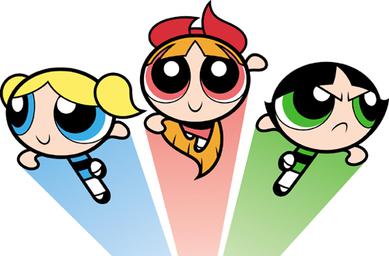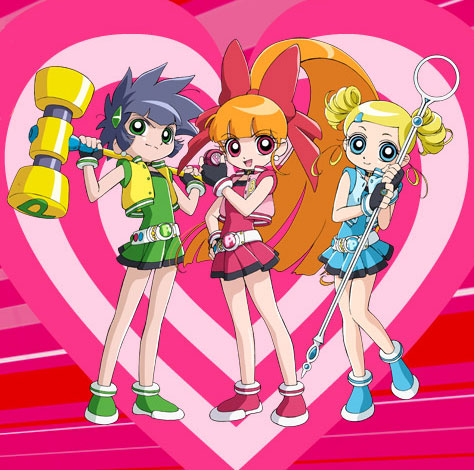In the world of Rugrats and Spongebob, As Told by Ginger was a cartoon for the average preteen girl that was battling the challenges of everyday middle school life. The show focused on Ginger Foutley, a 13 year old girl being raised by a single mother, dealing with a really weird younger brother and trying to avoid the mean girls at school. I remember loving the show because it was the first cartoon I saw where the main character had divorced parents. Not like one parent died or one parent just isn’t talked about. No, she had two parents but they were divorced, just like me. Also, she was basically the only cartoon character that hanged her clothes and I thought that was pretty dope.
Ginger had three best friends. Dodie, who was that one friend with the over protective mom and she kind of acted like she knew everything? Also, she was that friend that would somehow back up your bad ideas then panic when the plan fell apart and you were moments away from being grounded for life. Then there was Darren who was her next door neighbor who started out as just her friend until he got his braces off and was suddenly hot and muscular and could play football? Because braces hold you back from all of that. AND THEN there was Macie Lightfoot.
Macie Lightfoot was the definition of awkward. She had really bad asthma so she was constantly wheezing, her nose was stuffed up a lot too? I think? I just remember her always having tissues. She was short and shy and wore glasses and was really smart too. Upon more research I found that she was also half Asian. They never specify what race of Asian but her mom is apparently Asian. The Internet defines Macie as such:
“Ginger’s other best friend is Macie, 14 years old (Jackie Harris). Macie is in a constant state of panic, as she is allergic to everything and fears change. She is portrayed as the “geekiest” one of the group, and is very knowledgeable.”
Now, because this is middle after school there was also a group of mean girls that ran the school. They were basically the original Mean Girls with the exception of Heather’s and the Pink Ladies. So they were basically just before Mean Girls. There was the leader, Courtney Gripling who was blonde, fashionable, pretty, rich and popular. Even though she was the ring leader she was also the nicest of the group because she liked Ginger. Her best friend however was Miranda Killgallen.
Miranda was one of the popular girls and also the girl you never wanted to mess with. She kind of just gets everything she wanted and if she didn’t she found a way. She’s constantly trying to ruin Ginger’s reputation or finding way to get her in trouble. Her father is a police officer and she is African-American. The internet had this to say about her:
“Miranda Killgallen (voiced by Cree Summer) is Courtney’s right-hand woman and possibly the wickedest girl in school, serving as Ginger’s main antagonist on the show. Apart from having totally different personalities, Miranda’s dislike for Ginger mainly stems from her fear that “Foutley” may replace her as Courtney’s best friend. On top of that, both Miranda and Ginger have a romantic interest in Ian Richton.”
In my opinion, the show did several things right. They had a main character being raised by a single mother and portrayed it well! I mean, the mom was a nurse and reminded me a lot of my own mom, she often came home tiered and she could be kind of embarrassing but she was always there when they needed her. Ginger had legitimate problems that 13 year old girls have, like liking a boy that barely knows your name. And how spot on they were with how cruel girls can be! They had episodes about depression, peer pressure, crushes, sexual harassment. They dealt with her mom dating a guy who has kids and how annoying that can be if you’re the kid.
But going back and watching the show its easy to see where they took the easy way out and used race against the character. Macie totally fuels the Asian stereotype the same way Miranda does with the black women stereotype. Macie is the classic nerd, wearing glasses, allergic to everything, ridiculously smart and shy. Not to mention I can’t remember her ever having a love interest in the series. And Miranda is loud, she’s sassy, she’s evil, she’s inconsiderate and she does what it takes to get what she wants.
Typical I guess. The Asian kid is the nerd while the black kid is the villain.
Click here to view the embedded video.
 Jeremy Lin has made headlines starting in 2011-2012. He had became a real over night sensation. In the 2011-2012 season Lin was deep on the bench, he was the 15th man.(If watch basketball for even a split second you see that 5 play at a time and might go 8 to 10 deep unless your losing or winning by a lot.) Lin got his break when the coaching strike happened in 2011. This gave the coaches time to really look at Lins work effort. “He was the first to arrive and the last to leave.” Lin has made a big difference for the Asian American basketball community by showing everyone that Asians can play basketball. He has shown people that there shouldn’t be stereotypes regarding basketball because as long as you have skill, color doesn’t matter. Lin has made a difference not only with having millions knowing his name but taking time to run basketball camps in China for children.
Jeremy Lin has made headlines starting in 2011-2012. He had became a real over night sensation. In the 2011-2012 season Lin was deep on the bench, he was the 15th man.(If watch basketball for even a split second you see that 5 play at a time and might go 8 to 10 deep unless your losing or winning by a lot.) Lin got his break when the coaching strike happened in 2011. This gave the coaches time to really look at Lins work effort. “He was the first to arrive and the last to leave.” Lin has made a big difference for the Asian American basketball community by showing everyone that Asians can play basketball. He has shown people that there shouldn’t be stereotypes regarding basketball because as long as you have skill, color doesn’t matter. Lin has made a difference not only with having millions knowing his name but taking time to run basketball camps in China for children.
.jpg) The game was only very recently released, having come out last Friday. It’s about a fictional world where the balance is kept by four crystals, and the bad guys are trying to change the order of the world by corrupting the crystals so that people will no longer have faith in them. However, things in the game are not quite as clean cut as in many other games. One of the main character, Edea, is the daughter of the man responsible for trying to corrupt the crystals. She joins your party early on in the game, and has to come to terms over the course of the game with the fact that much of her life has been a lie. Her people have vilified the crystals to such an extent that they believe the people who watch over them to be evil witches. She’d been taught that they were the most wicked beings, when in fact the girls guarding the crystals were priestesses (miko, 巫女, translated as “vestal” for some reason), and are not only seemingly vegetarian but generally pacifistic, and spend the majority of their lives praying to the crystals. Though not necessarily the specific main character, Edea needs to learn throughout the game how the war raging is completely evil not on the part of the crystal worshipers, but on the part of her own family.
The game was only very recently released, having come out last Friday. It’s about a fictional world where the balance is kept by four crystals, and the bad guys are trying to change the order of the world by corrupting the crystals so that people will no longer have faith in them. However, things in the game are not quite as clean cut as in many other games. One of the main character, Edea, is the daughter of the man responsible for trying to corrupt the crystals. She joins your party early on in the game, and has to come to terms over the course of the game with the fact that much of her life has been a lie. Her people have vilified the crystals to such an extent that they believe the people who watch over them to be evil witches. She’d been taught that they were the most wicked beings, when in fact the girls guarding the crystals were priestesses (miko, 巫女, translated as “vestal” for some reason), and are not only seemingly vegetarian but generally pacifistic, and spend the majority of their lives praying to the crystals. Though not necessarily the specific main character, Edea needs to learn throughout the game how the war raging is completely evil not on the part of the crystal worshipers, but on the part of her own family.









